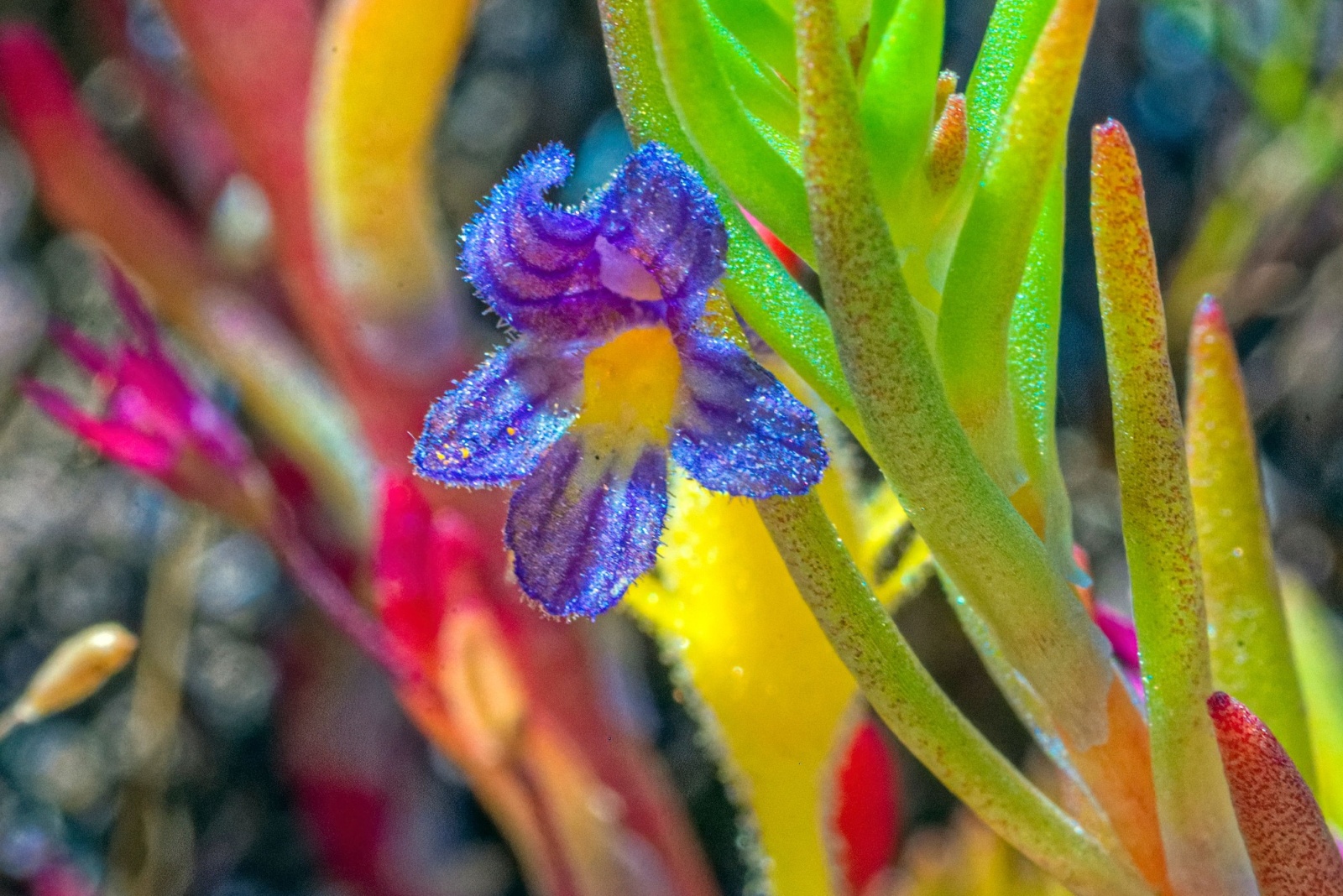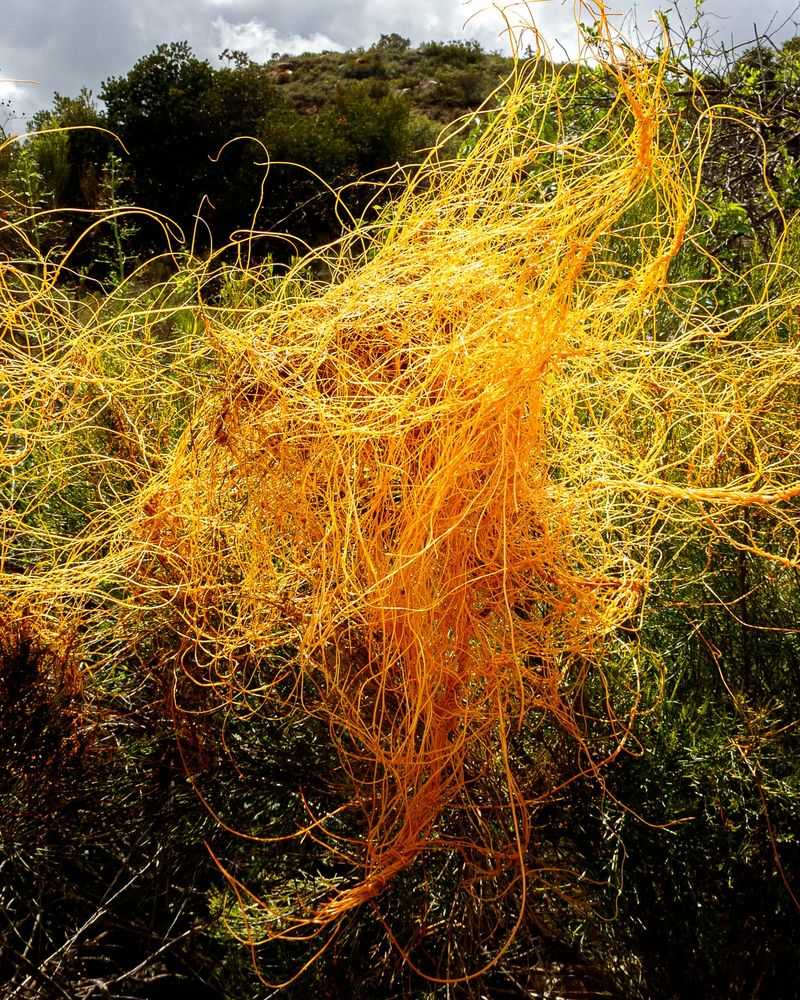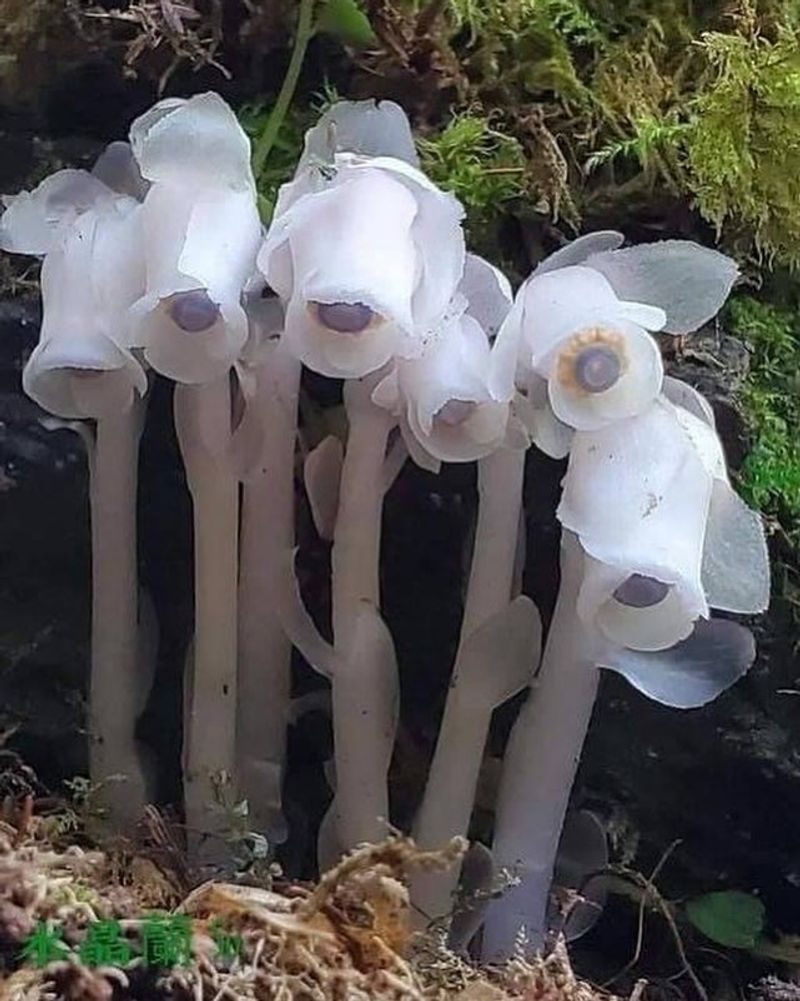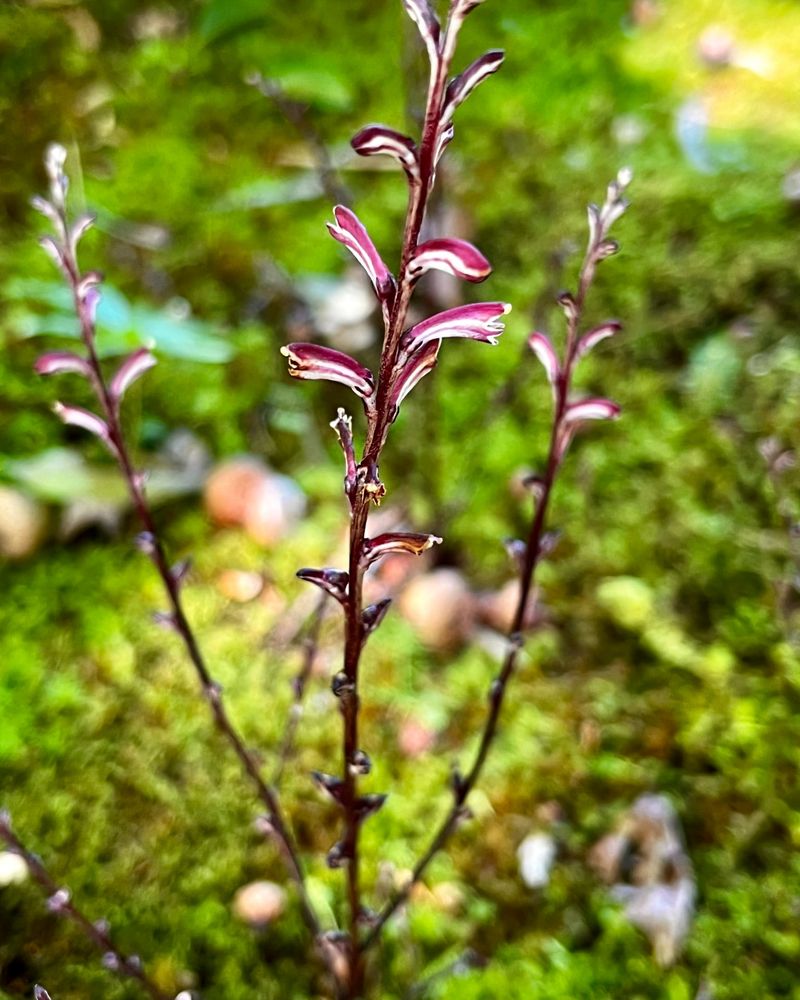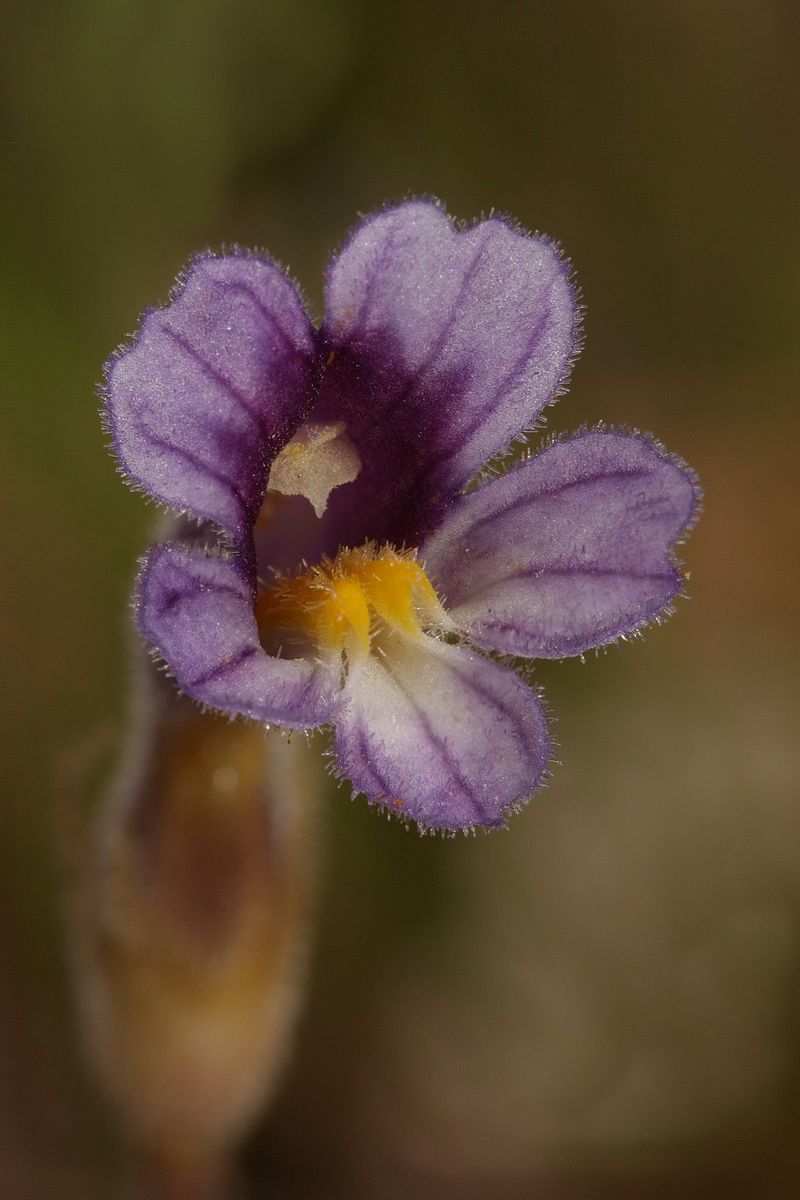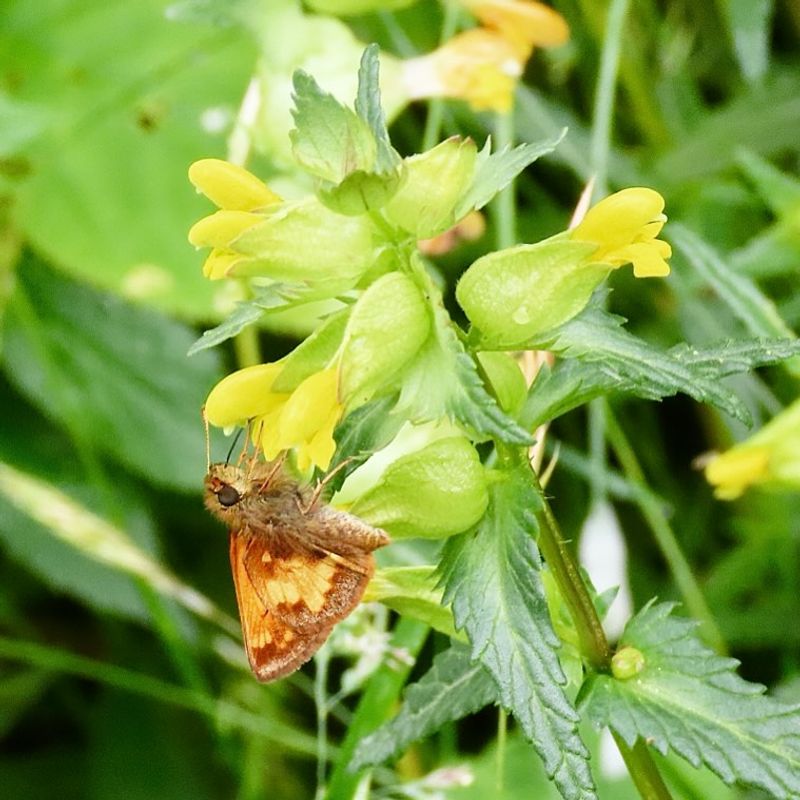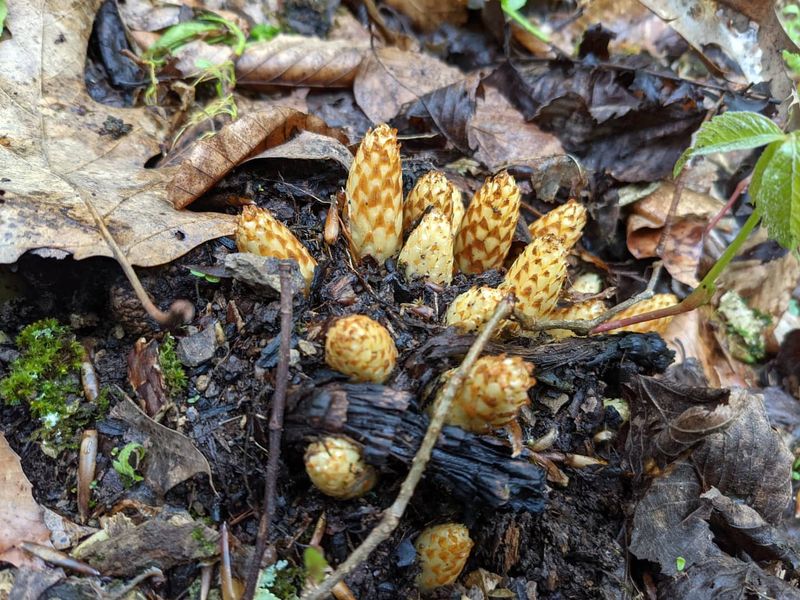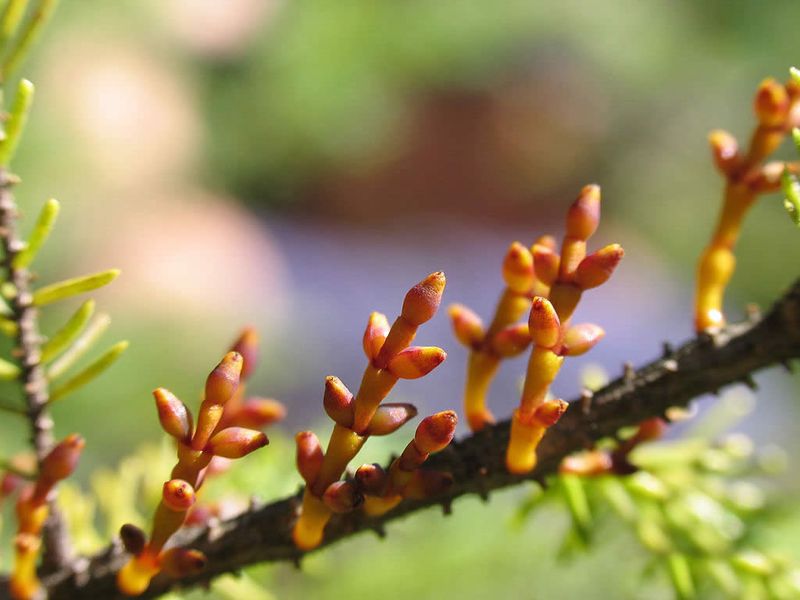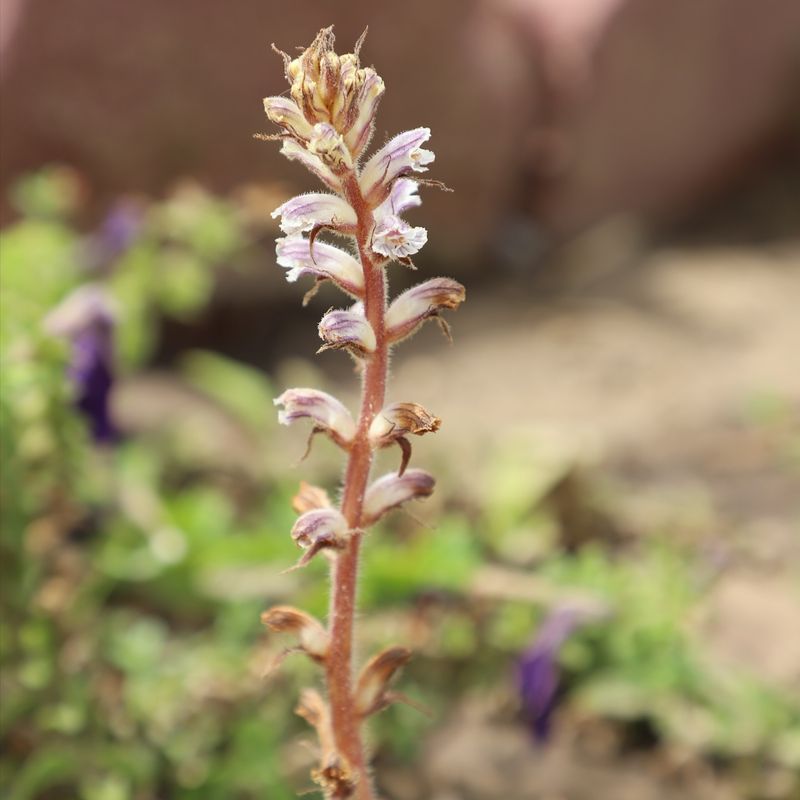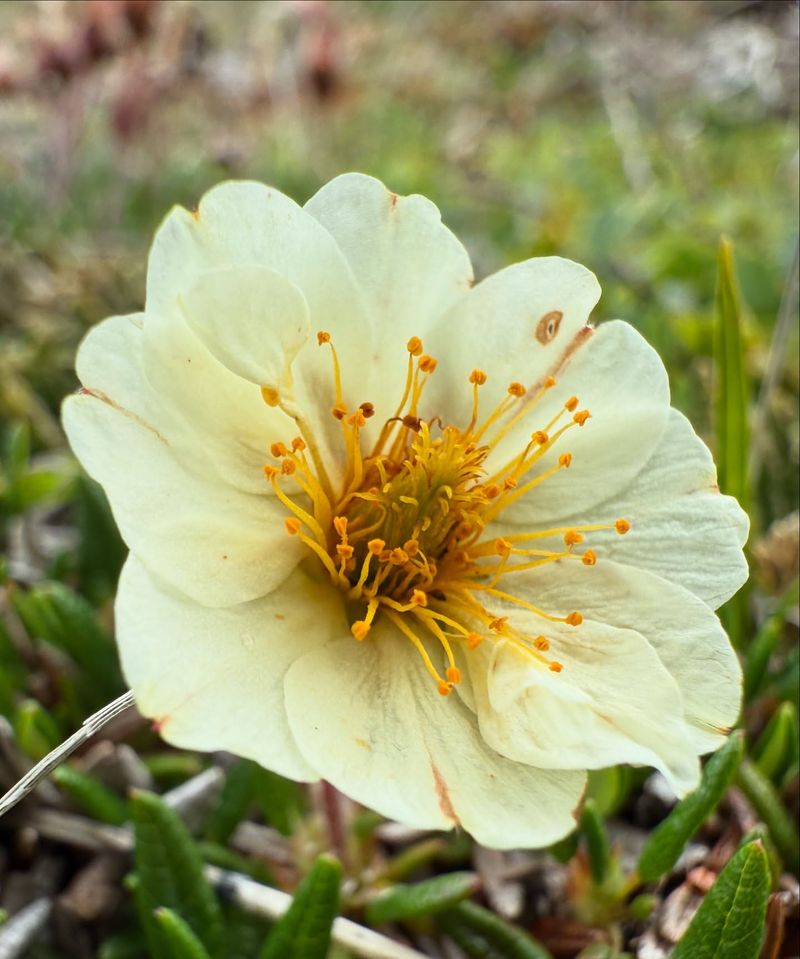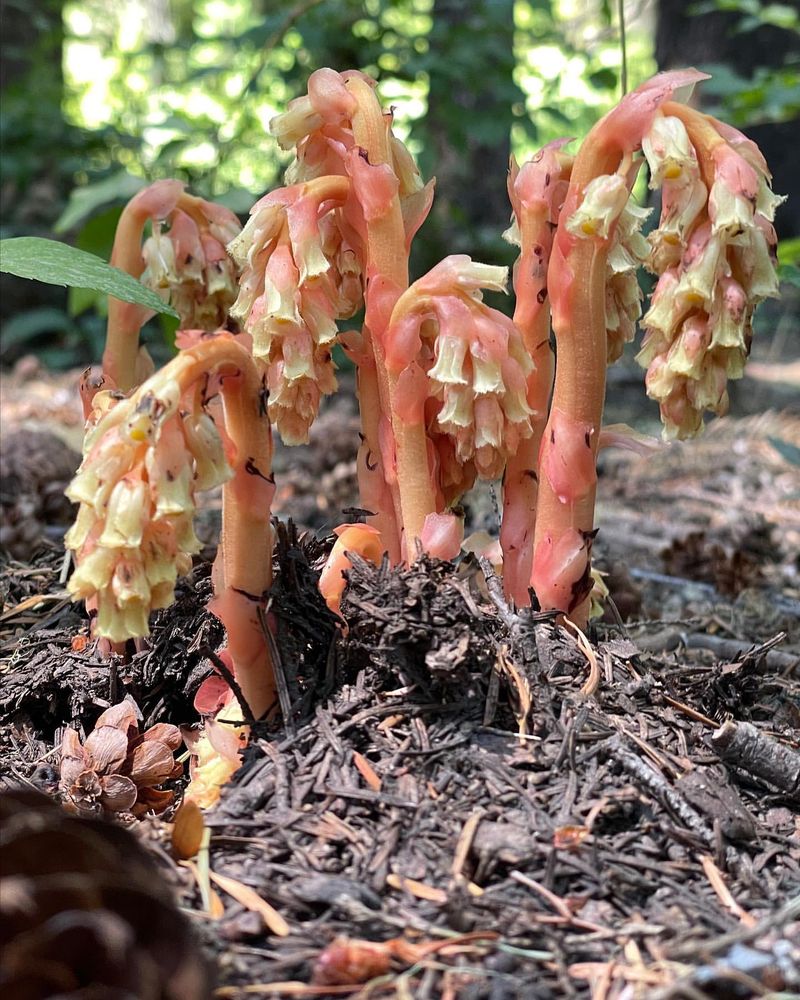Have you ever noticed strange, colorful plants in your garden that seem to appear out of nowhere? These might actually be parasitic flowers, plants that steal nutrients from their hosts instead of making their own food.
New York’s climate creates perfect conditions for several parasitic garden flowers to flourish, often hiding in plain sight among your beloved plants.
1. Dodder (Cuscuta)
The orange spaghetti-like strands of Dodder create an alien landscape in gardens across New York. Once attached to a host plant, it sinks its specialized roots directly into the victim’s tissues to steal nutrients.
Dodder spreads rapidly in summer months, wrapping around multiple plants in a tangled web. Removing it requires catching it early before it establishes a stronghold in your garden beds.
2. Indian Pipe (Monotropa uniflora)
Ghost-white stems pushing through leaf litter signal the arrival of Indian Pipe in shady New York gardens. Unlike typical parasites, these eerie blooms actually steal nutrients from fungi that have already formed partnerships with tree roots.
Look for them in dense woodland gardens between June and September. Their waxy, translucent appearance earned them the nickname “corpse plant” among early settlers.
3. Beechdrops (Epifagus virginiana)
Slender brown stalks with tiny purple-striped flowers mark the presence of Beechdrops in wooded New York gardens. They exclusively target beech tree roots, tapping directly into them for all their nutritional needs.
Despite their parasitic nature, Beechdrops rarely cause significant damage to established trees. Many gardeners actually welcome these unusual additions that appear mysteriously in fall, adding subtle interest to woodland settings.
4. One-flowered Cancer Root (Orobanche uniflora)
Delicate pale purple flowers rising just inches above the soil reveal the presence of One-flowered Cancer Root. Each solitary bloom connects underground to the roots of nearby plants, primarily targeting members of the aster family.
Spring gardens throughout New York state provide perfect habitat for these diminutive parasites. Gardeners often mistake them for ordinary wildflowers until noticing their complete lack of green leaves or chlorophyll.
5. Yellow Rattle (Rhinanthus minor)
Yellow Rattle gets its name from the distinctive sound its seed pods make when shaken in late summer. Garden designers in New York sometimes deliberately introduce this semi-parasitic plant to weaken aggressive grasses in meadow gardens.
Bright yellow snapdragon-like flowers appear from May through July. While it does produce some of its own food through photosynthesis, Yellow Rattle still taps into grass roots for extra nutrients and water.
6. Squawroot (Conopholis americana)
Resembling pine cones sprouting directly from the ground, Squawroot creates unusual displays in oak-dominated New York landscapes. The plant forms exclusive parasitic relationships with oak tree roots, sometimes appearing in clusters of dozens of stalks.
Entirely lacking chlorophyll, their pale yellow-brown color darkens to nearly black as they age. Native American tribes once used these strange growths medicinally, particularly for treating reproductive ailments in women.
7. Dwarf Mistletoe (Arceuthobium pusillum)
Far from the festive holiday plant, Dwarf Mistletoe creates witch’s broom deformities in New York’s conifer trees. The tiny shoots emerge directly from infected branches, often causing distinctive swelling and branch distortion.
Seeds explosively discharge with enough force to travel 30 feet! Once established, these parasites slowly weaken their hosts over decades. Primarily affecting spruce trees in northern New York, their presence creates bizarre sculptural forms in the forest canopy.
8. Broom-rape (Orobanche minor)
Purple-tinged stems topped with tubular flowers signal Broom-rape’s invasion of New York gardens. Targeting clover and other legumes, this complete parasite lacks any ability to produce its own food.
Originally from Europe, it arrived as a stowaway in contaminated crop seeds. The name derives from its devastating effect on the broom plant in its native range, though in New York it typically attacks different host species.
9. Swamp Lousewort (Pedicularis lanceolata)
Elegant yellow-green flower spikes of Swamp Lousewort create deceptively attractive displays in wet New York meadows and gardens. Unlike many parasites on this list, it produces green leaves and can photosynthesize, but still taps into neighboring roots for extra nutrients.
Native plant enthusiasts sometimes cultivate this semi-parasite in rain gardens. The name “lousewort” stems from an old belief that livestock grazing on these plants would develop lice—a misconception with no scientific basis.
10. Pinesap (Monotropa hypopitys)
Clusters of waxy, pipe-shaped flowers in shades from pale yellow to vibrant red announce Pinesap’s presence in New York’s coniferous forests. Like its cousin Indian Pipe, it parasitizes mycorrhizal fungi rather than directly attacking tree roots.
The plant emerges suddenly after summer rains, often in groups. Despite its name, Pinesap doesn’t exclusively grow near pines—it appears in various forest types across the state, creating ephemeral displays that last just a few weeks.

